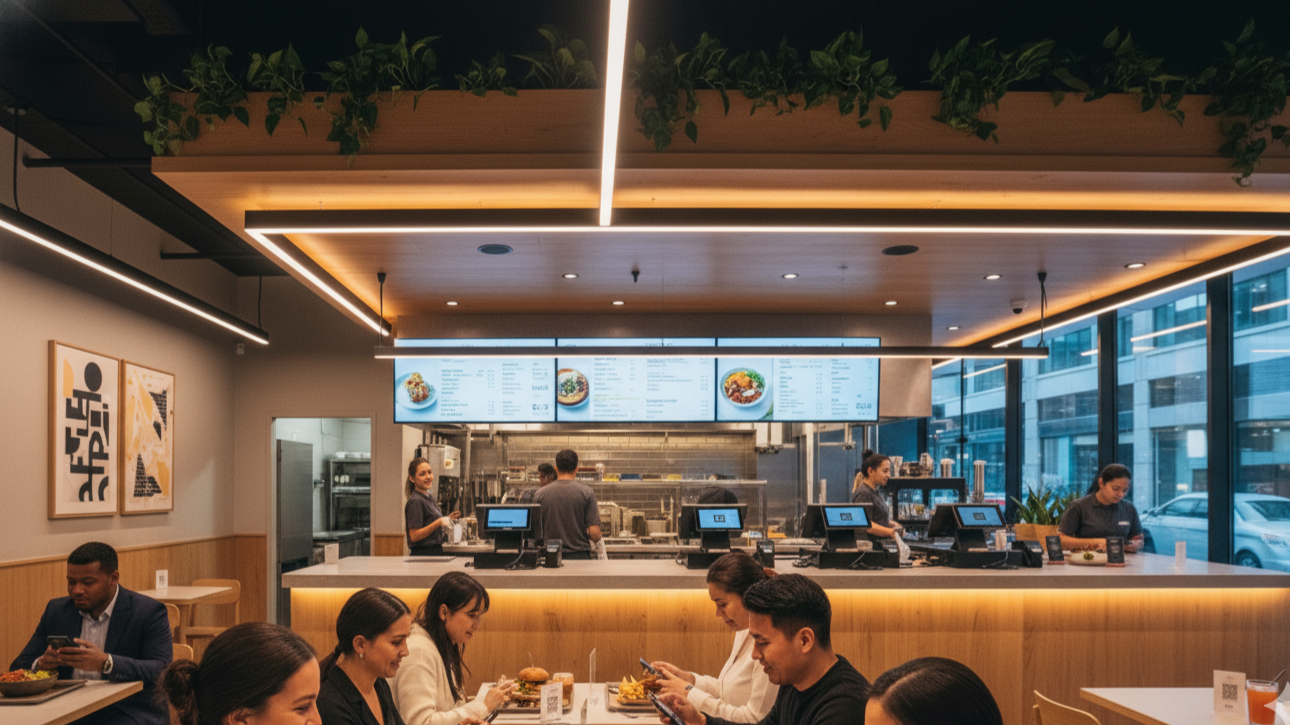
5 Proven Strategies to Reduce Food Waste in Your Quick Serve Restaurant
Learn how to reduce food waste in your quick serve restaurant with five proven strategies. Optimize inventory management, follow "First In, First Out" practices, track and analyze waste, control portion sizes, and repurpose leftover ingredients to minimize losses.
A surge is being noticed among consumers considering sustainability when selecting quick-service restaurants. You cannot impress, attract, and retain eco-conscious customers without making your quick-service restaurant sustainable by adopting best practices like reducing food wastage.
As highlighted by several studies, the restaurant sector contributes immensely to environmental challenges by wasting over 30% of food each year. In addition to impressing eco-conscious customers, reducing food waste in restaurants helps you increase profits by curbing ongoing costs.
You must make your quick-service restaurant sustainable by implementing best practices and leveraging technologies. In this blog, we discuss how your quick-service restaurant can reduce food wastage regularly by implementing smart strategies and a modern restaurant POS system like Nova.
How to Reduce Food Wastage in Your Quick-Service Restaurant?
Your quick-service restaurant can reduce food wastage significantly by implementing these smart strategies. However, you must make food wastage reduction an ongoing process by adopting new best practices and making data-driven decisions.
1. Optimize Your Inventory Management System
Effective inventory management is the first step in reducing food waste. Having too much stock can lead to spoilage, while having too little can result in lost sales. To strike the right balance, it's essential to have a system in place that tracks inventory in real-time.
Practical Tip: Implement an automated inventory management system that tracks ingredient levels and notifies you when items are running low. This helps you avoid over-ordering and reduces the risk of spoilage. Additionally, reviewing historical sales data can help you predict peak demand periods and adjust orders accordingly. Consistent inventory checks will also help prevent food from sitting too long in storage.
2. Embrace "First In, First Out" (FIFO) Practices
One of the most common causes of food waste in restaurants is poor stock rotation. The "First In, First Out" (FIFO) method ensures that older stock is used before new items, preventing spoilage and reducing waste.
Practical Tip: Train your staff to follow FIFO principles when stocking shelves or refrigerators. Clearly label expiration dates and position older items at the front of the shelves to ensure they are used first. Implementing this practice across your kitchen will help you minimize waste due to expired products.
3. Track and Analyze Food Waste
You can't manage what you don’t measure. Tracking food waste allows you to identify which areas of your restaurant generate the most waste, giving you the information you need to make improvements.
Practical Tip: Set up a food waste tracking system that records why food is being discarded (e.g., spoilage, preparation mistakes, or customer leftovers). Analyze this data regularly to identify patterns. For instance, if you're consistently discarding certain ingredients, it may be time to adjust portion sizes or reduce orders for those items. By tracking waste, you can make data-driven decisions that significantly reduce losses.
4. Portion Control is Key
Serving oversized portions is a common contributor to food waste in quick-serve restaurants. Customers may not finish large portions, and the excess food ends up in the trash. By controlling portion sizes, you can reduce food waste without compromising the customer experience.
Practical Tip: Use portion control tools like measuring cups, scoops, or scales to ensure consistency in serving sizes. This not only reduces waste but also helps with cost control. Additionally, offering customers options for smaller portion sizes can cater to varying appetites while minimizing the amount of uneaten food.
5. Repurpose Leftover Ingredients
Unused ingredients and food scraps don’t have to go to waste. Get creative in the kitchen by finding ways to repurpose leftover ingredients into new dishes or specials. This not only reduces waste but can also add variety to your menu and increase customer interest.
Practical Tip: Introduce a daily special that incorporates leftover ingredients. For example, if you have surplus vegetables, you could create a soup or salad special. Another option is to offer promotions like "Soup of the Day" or "Chef’s Special" using items close to their expiration date but still fresh. This ensures food is used efficiently and cuts down on waste.
How does Nova Help Your Quick-Service Restaurant Reduce Food waste?
Nova is designed by restaurateurs as a modern POS cum restaurant management platform. In addition to simplifying payment processing, the cloud-based software comes with integrated features to automate crucial restaurant operations. Your quick-service restaurant can reduce food wastage by leveraging Nova in several ways.
Real-Time Inventory Tracking
Nova enables you to track inventory levels in real-time. Hence, it becomes easier for you to reduce food wastage by using ingredients nearing expiration and avoiding over-ordering perishable items.
100% Order Accuracy
Often, quick-service restaurants waste food due to errors in taking orders and preparing food. Nova enables your establishment to support. QSR menu ordering. Your guests can place orders directly by accessing the QSR menu using smartphones. Thus, you can cut down on discarded food by ensuring order accuracy.
Menu Engineering
Nova enables you to create real-time menus on the go. You can customize the digital menu by offering dishes prepared using ingredients nearing expiration. Furthermore, you can encourage customers to order the dish by offering discounts.
Demand Forecasting
In addition to generating automated daily reports, Nova features predictive analytics. It forecasts demand by analyzing historical data. The demand prediction helps your restaurant reduce food wastage by preparing food in appropriate quantities.
Informed Decision-Making
Nova uses advanced analytics to gain actionable insights by analyzing your restaurant’s real-time operational data. These insights help curb food wastage by customizing the menu, prioritizing high-demand dishes, and minimizing the overproduction of less popular dishes.
Conclusion
Several studies suggest a consistent increase in customers who use sustainability as a key parameter when choosing quick-service restaurants. Your quick-service restaurant cannot meet the expectations of these eco-conscious customers without becoming sustainable. It must reduce food wastage regularly to become sustainable as well as reduce costs. In addition to implementing best practices for reducing food waste in restaurants, you must boost operational efficiency by implementing a feature-rich POS system like Nova.

.svg)




